Are you looking for a new and exciting way to take your gardening skills to the next level? Have you heard of raised garden beds but aren't convinced that raised beds are worth the investment?
Consider planting in a raised garden bed! Raised garden bed offers a variety of benefits, from easier maintenance, better soil drainage, and flexibility in planting options. And the best part? They're easy to build and can be constructed from various materials to fit any space or budget.
In this article, we'll walk you through the process of planting a raised garden bed, step by step so that you can enjoy a bountiful and beautiful garden all season long. So grab your gardening gloves, and let's get started.
Different Types of Raised Garden Beds:
Raised bed gardening is a great way to plant beautiful, abundant vegetables, herbs, fruits, root crops, and flower gardens in a small backyard. The raised garden bed is easier to maintain, especially for gardeners with physical limitations or who prefer a more comfortable gardening experience.
A raised bed is also called a kitchen garden. Depending on your garden type, you can do intensive planting in your kitchen garden. Also, planting in a raised garden bed is a great way to get fresh air outside and get closer to nature.
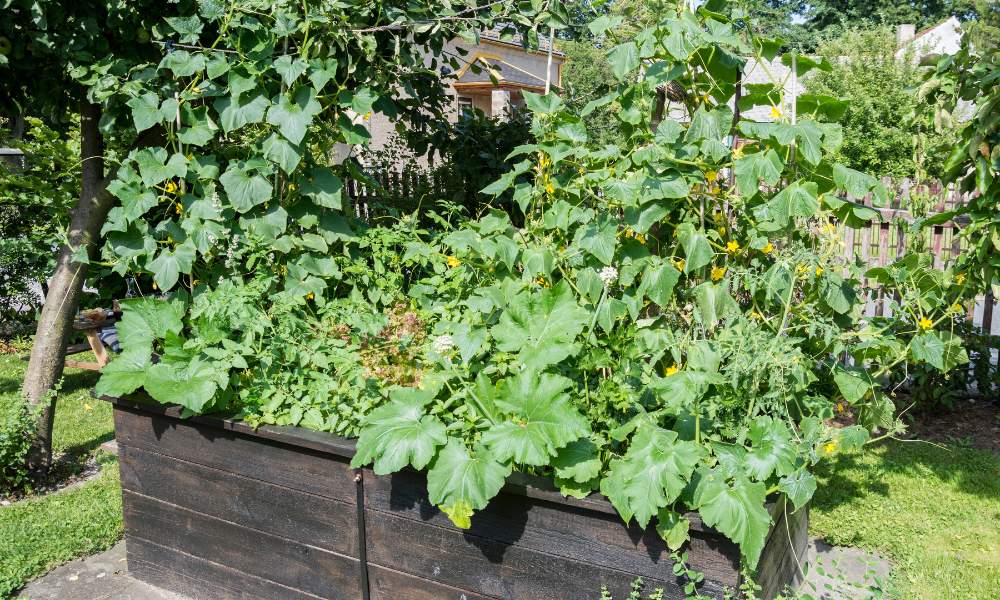
Wooden raised beds:
Wooden raised beds are the most common type of raised beds. They can be made from various wood types, such as cedar, pine, or redwood. Wooden beds are sturdy and durable, lasting many years if treated properly. These raised beds provide you with a longer growing space.
Brick-raised beds:
These are made from stacked bricks or concrete blocks to create a raised bed. Brick-raised beds are very durable and can be used to create permanent garden structures where you can plant intensively.
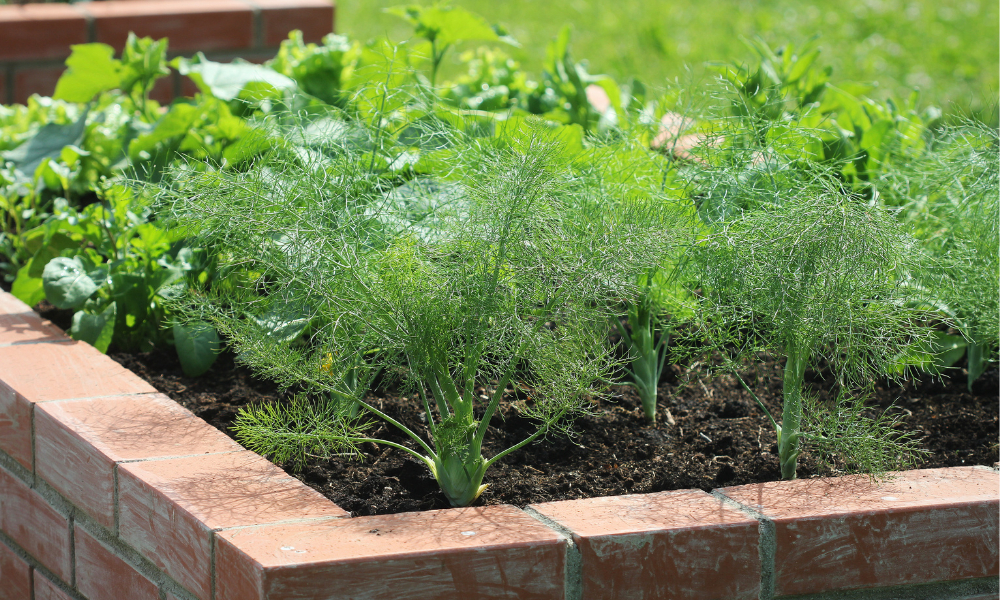
Stone-raised beds:
Stone-raised beds are similar to brick-raised beds but are made from natural stones. They are very sturdy and can add a decorative element to your garden.
Metal raised beds:
These are made from aluminum, galvanized steel, or steel. Metal raised beds are lightweight, portable, durable, and can last for many years.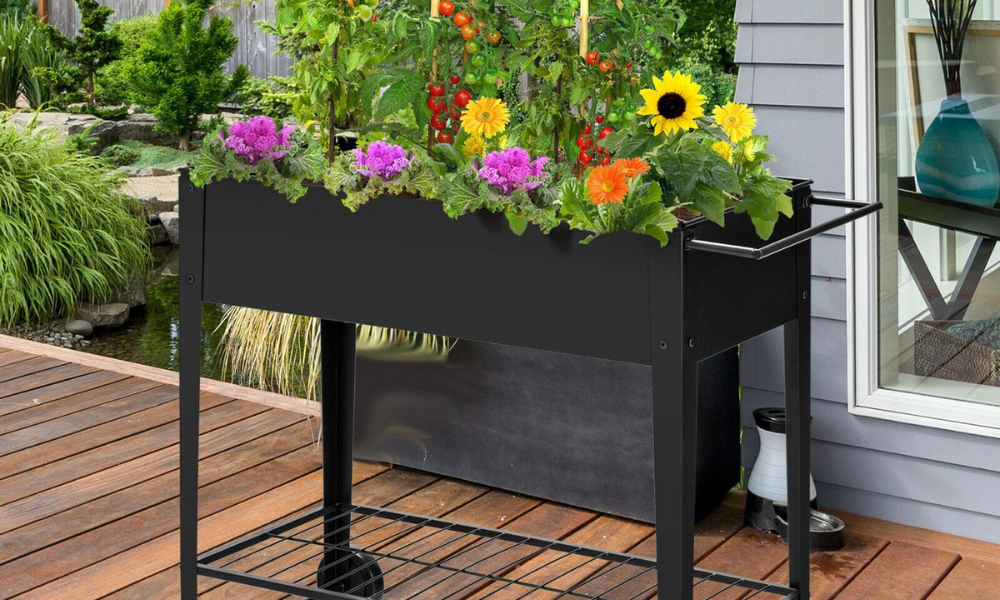
Plastic raised beds:
Plastic raised beds are made from durable plastic materials resistant to weather and pests. They are lightweight and easy to move around your garden.
Composite raised beds:
These are made from a combination of materials such as wood fibers and recycled plastic. They are eco-friendly and durable and offer growing space for your plant for many years.
7. Wicker raised beds:
Wicker raised garden bed are made of durable and weather-resistant wicker material. The raised garden bed offers a stylish and functional way to grow herbs, vegetables, flowers, and more. Their elevated design makes them easy to access and maintain, while their charming wicker texture adds a touch of elegance to your outdoor space. Create a beautiful and thriving garden with these versatile and convenient planter boxes.

Each type of raised garden bed has its advantages and disadvantages. The choice will depend on your personal preferences, budget, plant, and the specific needs of your garden.
Tips for Planning a Raised Barden Bed:
1. Plan Your Garden:
Before planting, plan your garden to make the most of your space. Consider the mature size of the plants you want to grow and give them enough room to thrive. Taller plants like pole beans should be planted in the back, while smaller plants like leafy greens should be planted in the front. You must also consider the soil depth when planting root crops like carrots or potatoes.
2. Choose the Right Location:
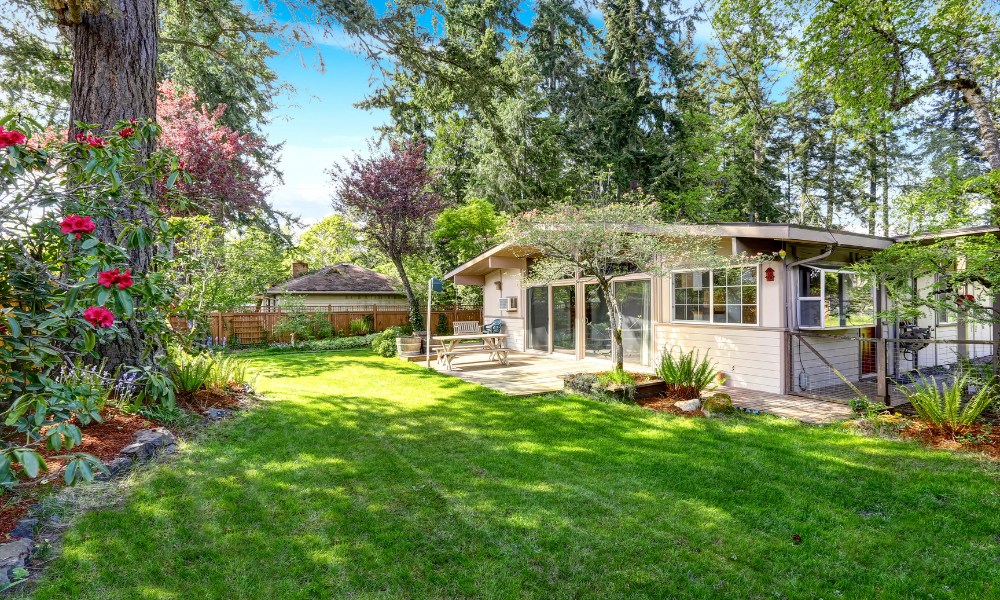
The first step is to decide where to place your raised garden bed. Look for an area with plenty of sunlight and easy access to water to retain moisture soil. Avoid areas with poor drainage or areas that are heavily shaded.
3. Determine the Size
Decide on the size of your garden bed based on the available space and the types of plants you want to grow. The raised garden bed should be at least six inches deep, but ideally, it should be between 12 and 24 inches deep. This will provide enough root space for most plants, including tomato plants and root crops like sweet potatoes. You should also consider the width; at least 3-4 feet wide. For portable raised bed garden, at least a foot wide is perfect for smaller plants.
Remember that a raised garden bed can be any height, so if you have back problems or mobility issues, you can make it taller to make it easier to work with.
4: Buy Raised Bed or Build Your Own:
You can build your frame using wood, galvanized iron, bricks, or cinder blocks. Use composite wood, recycled plastic, recycled wood, and untreated wood. Please refrain from using treated wood containing chemicals that may harm your plants.
There are various options for wooden raised garden beds in the market. When buying the raised bed, choose a durable, safe material that fits your aesthetic preferences. Do not buy a raised garden bed made from treated wood.
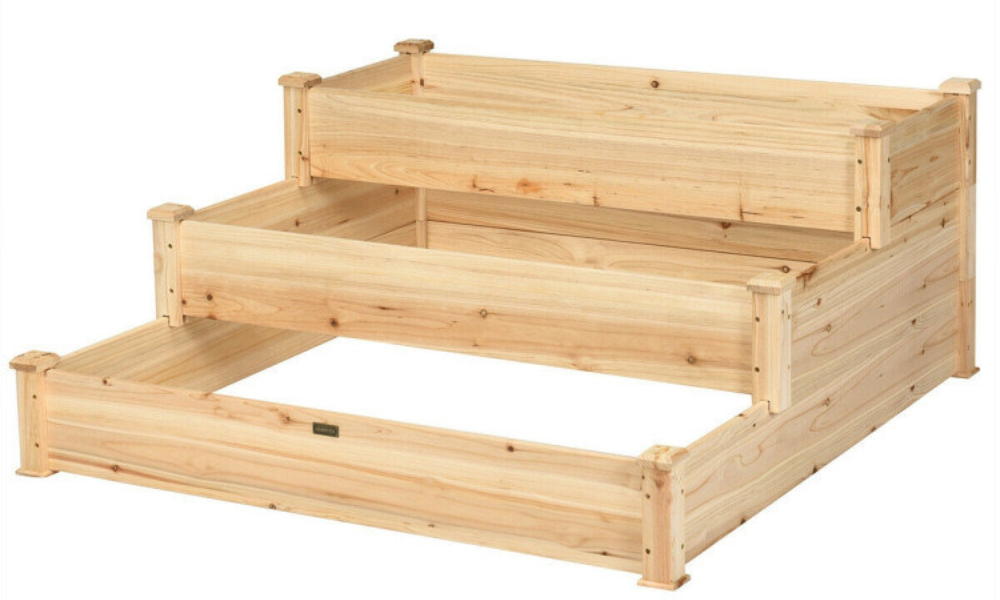
5. Use a Weed Barrier:
Place a weed barrier at the bottom of your garden bed before adding soil to prevent weeds from growing in your raised garden bed. You can use landscaping timbers and fabrics to prevent weeds from taking root. Doing these will lessen your garden chores while allowing healthy root growth of your plants.
6: Use the Right Soil and Add Organic Amendments:
Fill your raised garden bed with nutrient-rich soil that is well-draining or loose soil. A mixture of native soil and potting soil is a great option. Add organic matter like compost or manure to the soil surface to improve soil quality. This will help to retain moist soil and provide nutrients to plant roots. If you have a large garden bed more soil is needed. Organic matter also helps maintain soil temperature, making it perfect for planting edibles and producing fruit.
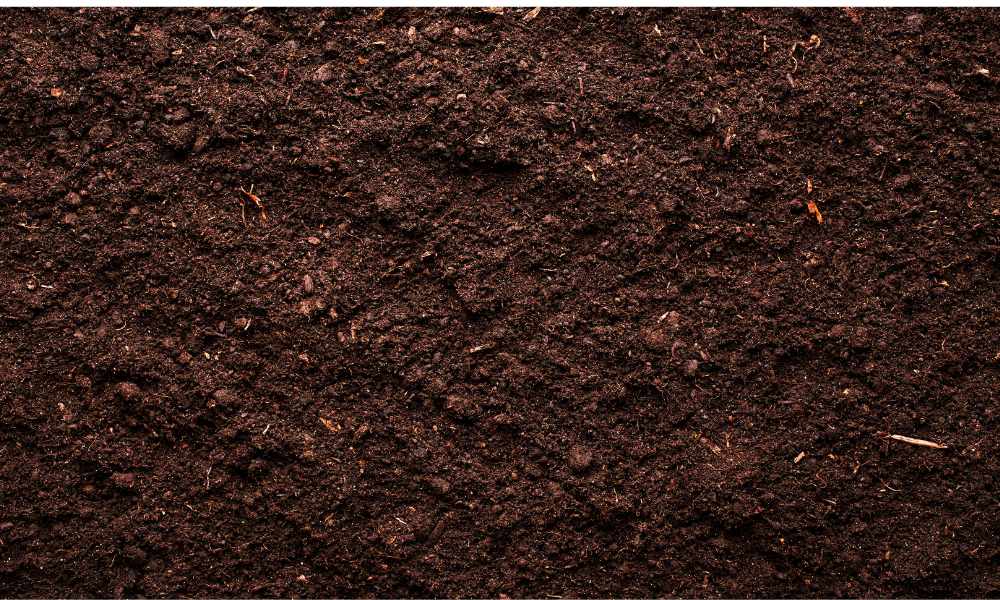
7: Plant Your Garden:
Once your raised garden bed is built and filled with soil, it's time to plant your garden! Choose plants well-suited to your climate and the sunlight your garden receives. You can grow anything from vegetables, leafy greens, herbs, flowers, shrubs, or berries.
8. Provide Support:
Some plants, like a tomato plants, require support to grow tall and produce fruit. Use stakes or trellises to provide support for your plants. You can also consider buying a raised garden bed with a trellis if you plan to plant robust vines.
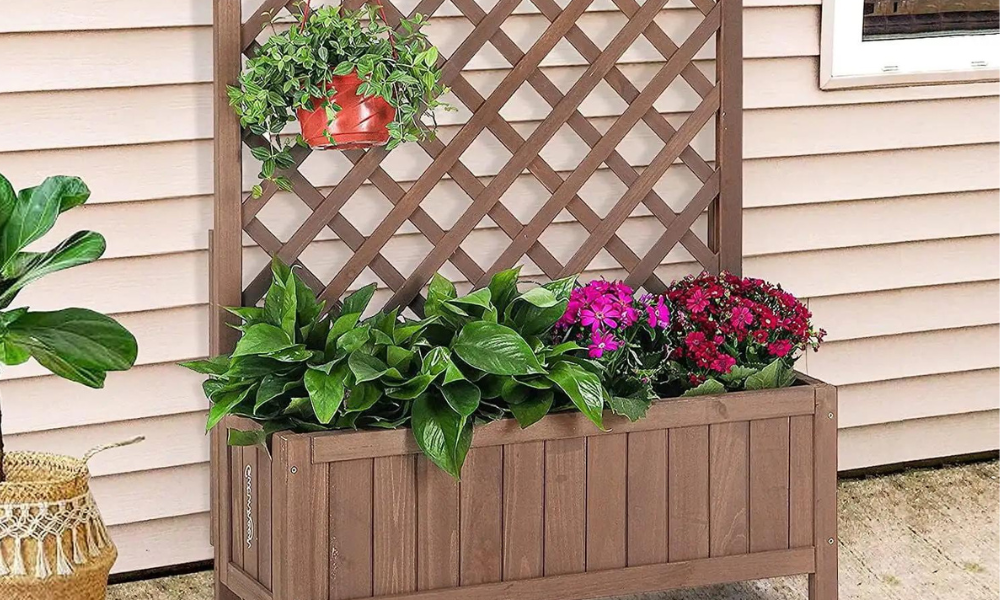
9. Consider Companion Planting:
Companion planting is growing two or more plants together to benefit each other. For example, planting pole beans next to taller plants like corn can support the beans while also providing nitrogen to the corn. Consider planting Lavender, Marigolds or other plants that attract beneficial insects. Explore our Companion Planting Chart and discover perfect plant pairings for optimal growth, natural pest control, and enhanced flavor.

10. Water Plants Roots
Water garden plants at their base, rather than using a sprinkler or a sprayer, which tend to wet leaves. Continuously damp leaves increase the risk of fungal diseases, such as the Septoria leaf spot, which can devastate an entire tomato crop. Or install a drip irrigation system that can be configured to deliver water where needed most and retain moisture.
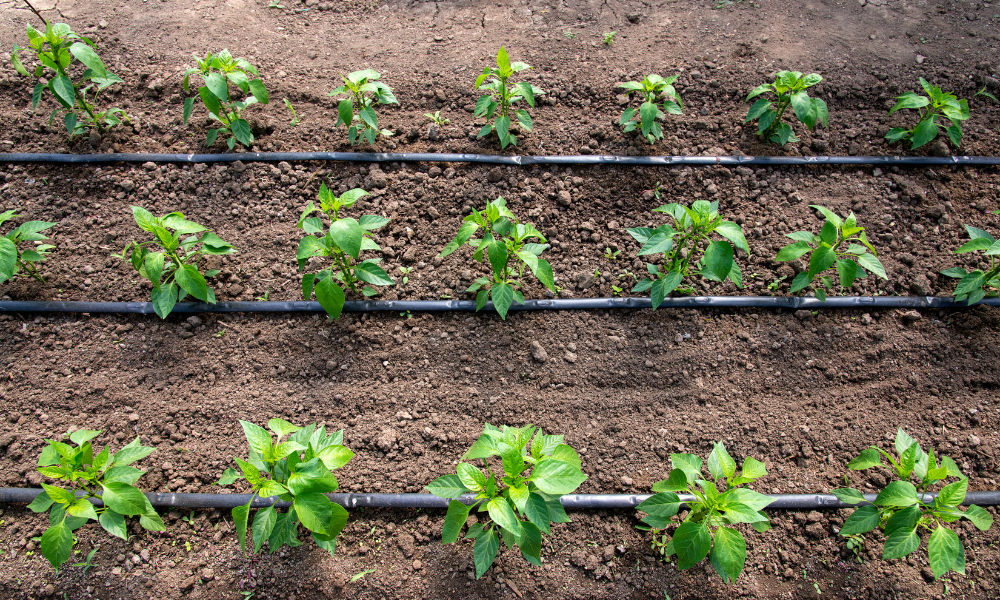
11. Greenhouses:
Upgrade your raised garden with greenhouses! They're the secret to creating a thriving raised garden bed and keeping your plants thriving even in cold temperatures. Greenhouses offer a controlled environment and protection from pests and weather, especially during the cold season. Greenhouses can extend your growing season and plant more. With a greenhouse, you can create the perfect growing environment and add additional features to your raised garden bed. There are various greenhouses in the market; the bigger the greenhouse, the more plants you can plant.
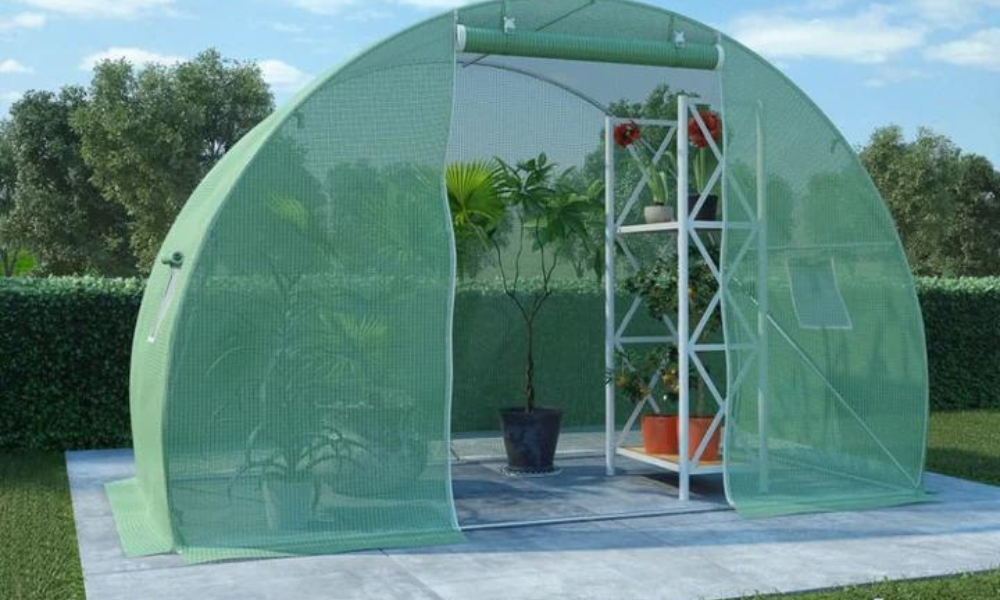
Why Use Raised Garden Beds?
A raised garden bed is an excellent way to grow various plants like a vegetable garden, herbs, fruits, and flowers in a contained space. Raised garden beds are becoming increasingly popular due to their numerous benefits. It offers many benefits over traditional gardening methods, including better soil quality, improved drainage, and easy plant access. A garden bed allows you to grow plants in nutrient-rich soil free of contaminants.
Benefits of Planting in a Raised Garden Bed
Healthy Plant Growth, High Crop Yields, and Successful Gardening:
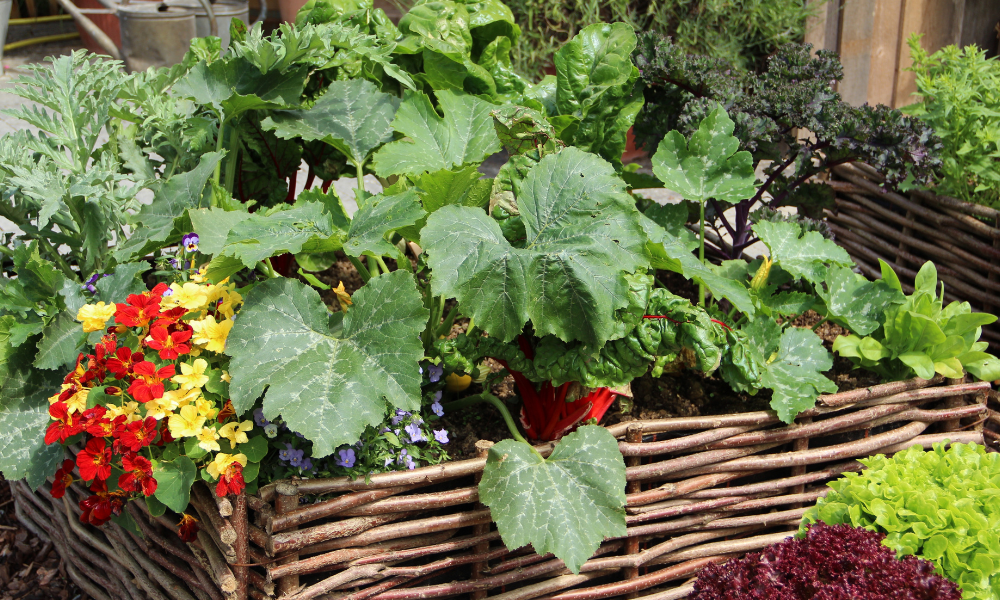
Raised beds are built above ground level, which allows water to drain away easily, preventing waterlogging and soil erosion. A raised bed allows more significant airflow to reach the garden soil, promoting plant root growth and nutrient uptake. This ensures that the plant roots are not constantly exposed to excess water, which can lead to root rot and other issues.
Raised bed gardens allow more precise control over soil composition and nutrient content. To improve soil structure and fertility, you can add soil enhancers, organic matter, organic compost, peat moss, and other soil amendments.
Overall, the improved soil quality of the raised garden bed is essential for healthy plant growth, high crop yields, and successful gardening.
Perfect for Small Spaces:
If you don't have a lot of space for a traditional garden, a raised bed is the perfect solution. They can be placed anywhere, including on a balcony or patio.
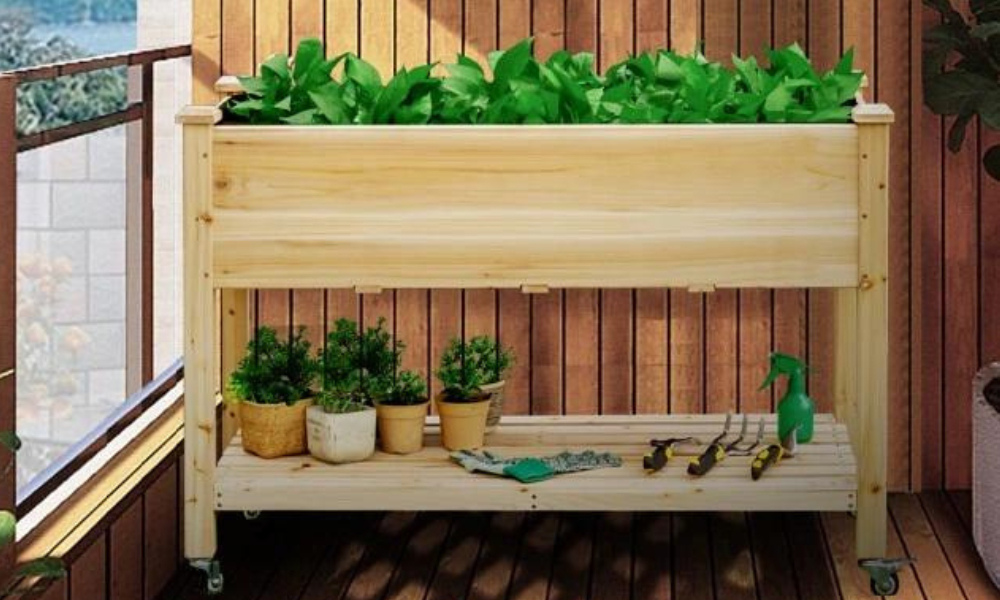
Easy Access:
The raised garden bed is elevated, making it easier to plant, tend, and harvest your plants. Raised beds provide easy access, so you don't have to bend over as much, which reduces the strain on your back and knees. The raised garden is great for gardeners with mobility issues, making raised bed gardening more enjoyable. Some raised beds are portable, allowing you to put them on your patio, balcony, or porch and plant leafy or salad greens that you can easily harvest when needed.
Longer Growing Season:
The raised garden bed can be covered with a greenhouse or other protective covering to extend the growing season. This is especially useful for gardeners in cooler climates outside the traditional growing season. A raised bed is perfect for plants that are not resistant to cold temperatures like leafy greens.
Raised Beds reduce the risk of weeds:
Elevating your garden reduces the chance of weed growth, saving you time and effort in weeding. A raised bed is easier to maintain than a traditional garden bed.
What Can You Grow in Raised Beds?
Raised beds are a fantastic spot for cultivating vegetables, herbs, and fruits and a lovely floral bed for pollinators. Even with limited space, raised beds are a great way to practice intensive gardening.
Top Root Crops for a Raised Garden Bed
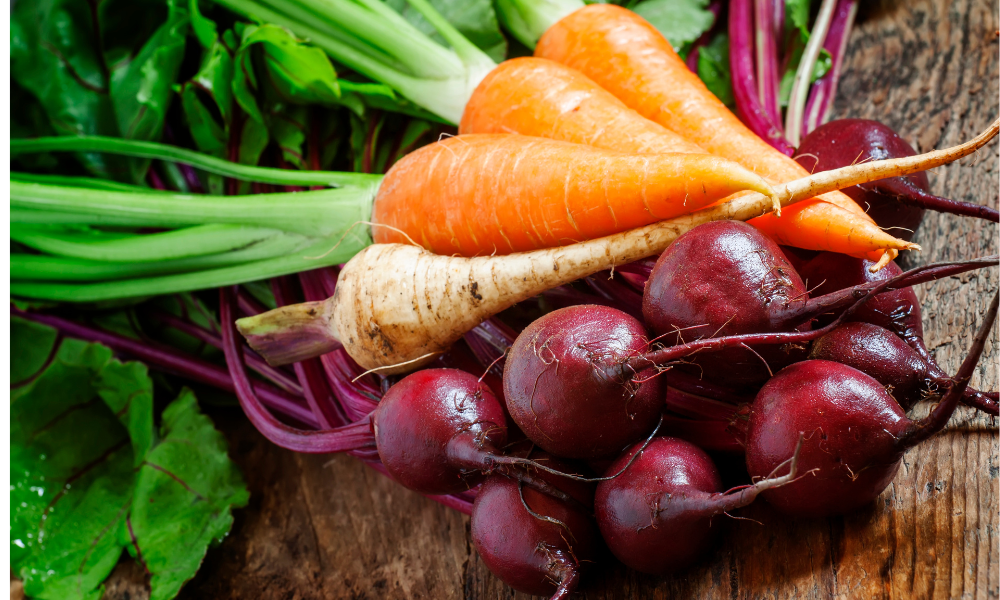
Root crops thrive in loose and well-drained soil. These root vegetables are fantastic for raised garden beds due to their low maintenance, high yield, and high dietary value. They are a nutritious, versatile, and sustainable option for anyone looking to incorporate more vegetables into their diet.
Popular root crops:
Carrots: Root vegetables like carrots are ideal for growing in elevated planters. Plants of this type thrive in well-drained, aerated soil and can be grown in pots or raised beds.
Radishes: Raised garden beds are ideal for growing radishes and fast-growing root vegetables. Easy to cultivate and add a welcome kick to salads and other dishes with their peppery flavor.
Beets: Beets are a beautiful, nutritious root crop that thrives in elevated planting spaces. Young, tender roots thrive in well-drained, sandy soil.
Turnips: Toss some turnips into your next stew, or use them in a salad for added crunch and flavor. They are simple to cultivate and taste best when harvested when the roots are young.
Onion: The onion is a root crop with many flavors that thrive in raised garden beds. Harvest them when the tops turn yellow and collapse; they thrive in well-drained soil.
Garlic: Raised garden bed are ideal for growing garlic, a pungent root crop that is simple to cultivate. It grows best in sandy, well-drained soil and is ready to pick when the tops are dry.
Growing Fruits in a Raised Beds
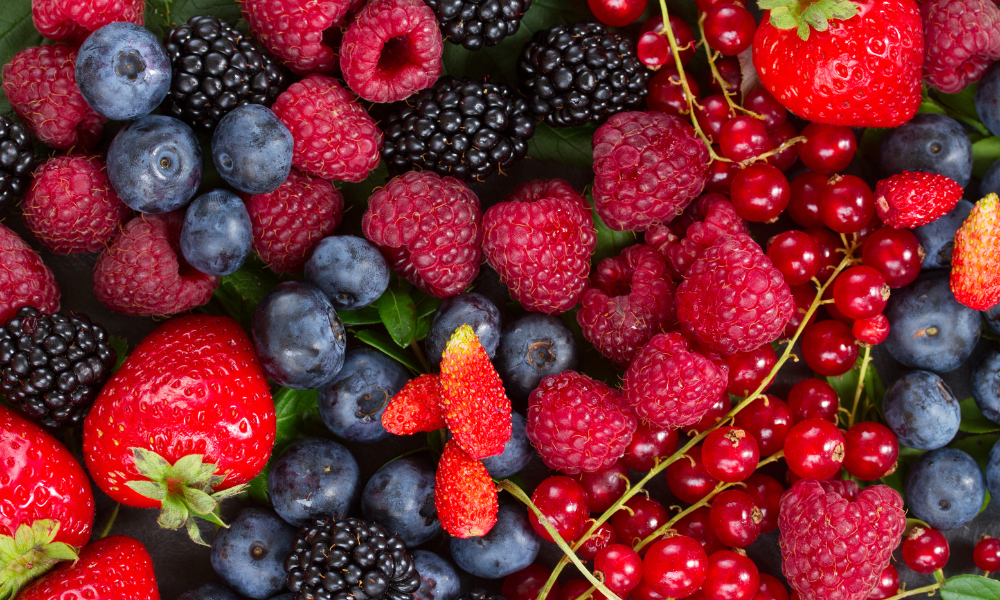
Growing fruits offers many benefits, both in terms of personal health and the environment. It is a sustainable and healthy activity that can provide a range of benefits for both individuals and communities. Small fruits are great for raised garden beds because they are easy to grow, productive, and visually appealing. When you plant fruits in raised bed kits, consider which fruit varieties to plant based on where you live and how they grow.
Popular Small fruits to plant
Strawberries are a great option for a raised bed, as they don't take up much space and produce much fruit. They are also relatively easy to care for and can be grown in sunny and partially shaded areas.
Blueberries are popular for a raised bed, as they require acidic soil and good drainage. They also produce a lot of fruit and have a long harvesting season.
Raspberries are a great option for a raised bed, as they produce a lot of fruit and are relatively easy to care for. They require some support, such as a trellis, but can be grown in sunny and partially shaded areas.
Blackberries are similar to raspberries in their growing requirements but are generally more thorny and can take up more space. They produce a lot of fruit and can be grown in sunny and partially shaded areas.
Dwarf fruit trees, such as dwarf apple, cherry, and peach trees, can be grown in a raised bed if the bed is deep enough to accommodate their root systems. They are a great option for growing fruit trees in a smaller space.
Grapes can be grown in a raised bed with a trellis for support. They require full sun and well-drained soil but can produce much fruit if cared for properly.
Currants are a good option for a raised bed, as they don't take up much space and can be grown in partial shade. They produce a lot of fruit and are relatively easy to care for.
Leafy Greens for a Raised Beds
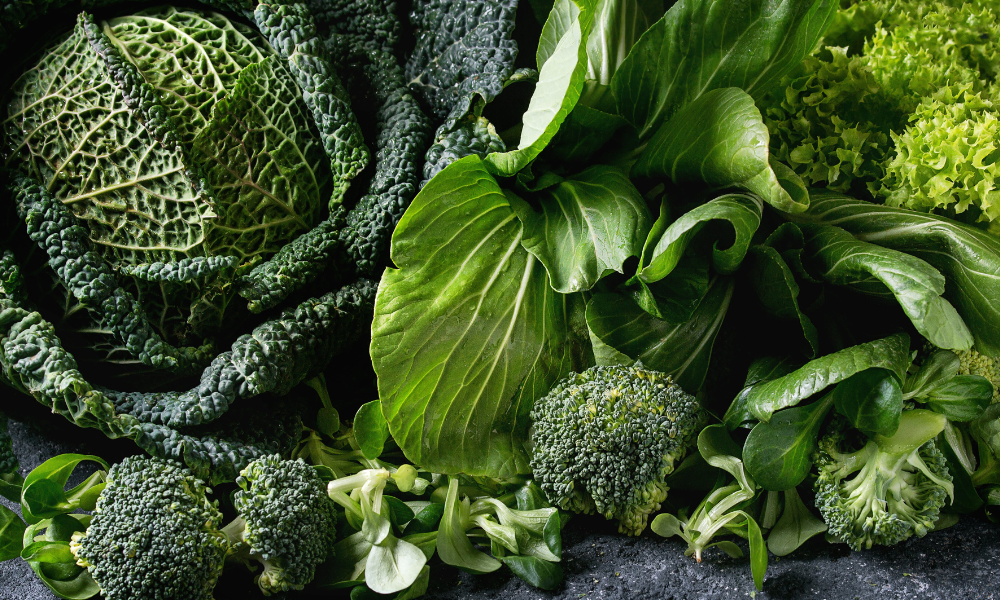
Leafy greens in your diet are a great way to boost your intake of essential nutrients and improve your overall health. They are an excellent choice for raised garden beds because they are nutrient-dense, low maintenance, and space-efficient. These plants are easy to grow and fast-growing; you can harvest them several times before the cold season. Planting leafy greens in a raised bed garden filled with loose soil benefit your plants. Many leafy greens can be planted in a raised bed vegetable garden, creating a bountiful vegetable garden.
Popular leafy greens to plant:
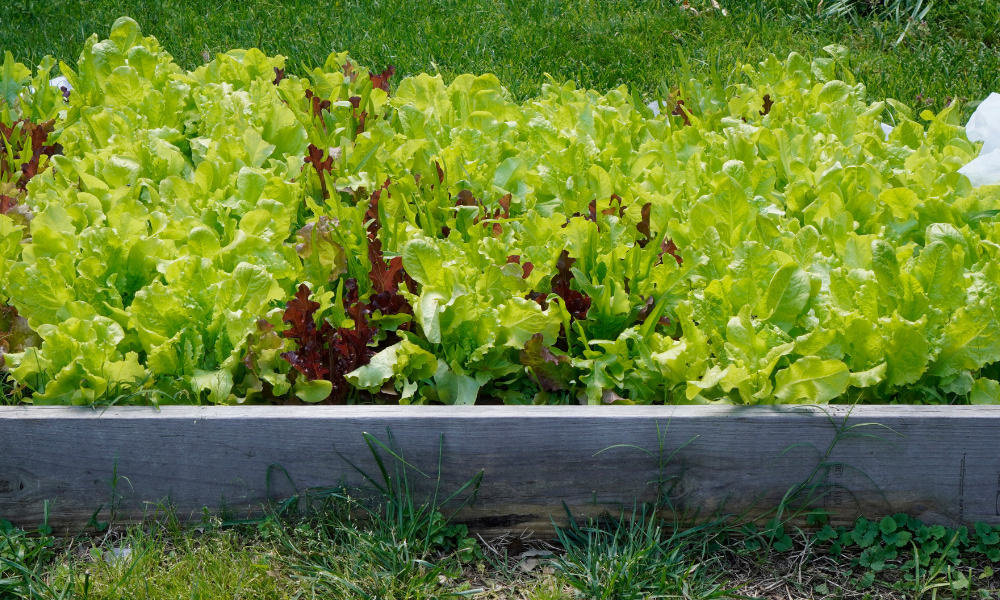
Lettuce is a cool-season crop that grows well in raised beds. It's easy to grow and has many varieties, from loose-leaf to romaine.
Spinach is another cool-season crop that is well-suited for raised bed gardening. It's packed with nutrients and can be harvested multiple times during the growing season.
Kale is a hardy and nutritious leafy green that can be grown year-round in some areas. It's easy to grow and comes in many varieties.
Swiss chard is a colorful and flavorful leafy green that can be grown in a raised bed. It's relatively easy to care for and has many varieties, from rainbow to white-stemmed.
Arugula is a spicy leafy green that is easy to grow and can be harvested multiple times during the growing season. It's a great addition to salads and sandwiches.
Mustard greens are peppery leafy greens that are easy to grow in a raised bed. They come in milder to spicier varieties and can be harvested young for a tender flavor.
Collard greens are hearty leafy greens that can be grown in a raised bed. They're a good source of nutrients and can be harvested multiple times during the growing season.
Herbs to Grow in a Raised Beds
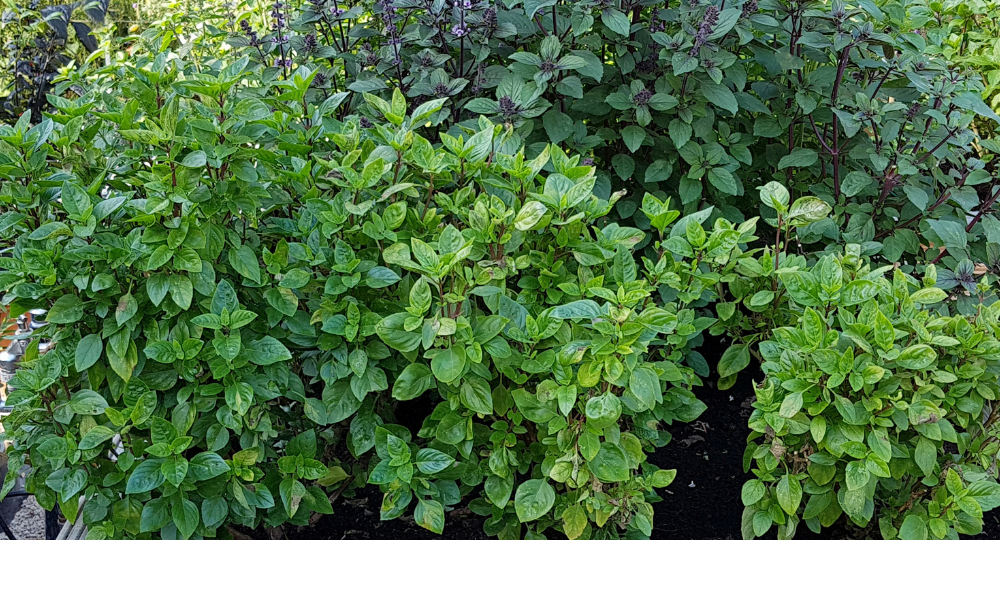
Herbs are an excellent choice for garden beds. They are low maintenance, easy to plant and grow, and valuable to a healthy lifestyle. Many herbs can be grown in raised beds.
Popular choices of herbs:
Basil is a fragrant herb that is easy to grow in raised beds. It's a versatile herb commonly used in Italian and Thai cuisine.
Thyme is a hardy herb that can be grown year-round in some areas. It's a flavorful herb that is commonly used in Mediterranean cuisine.
Rosemary is a fragrant herb easy to grow in a raised bed garden. It's a versatile herb commonly used in Mediterranean and Middle Eastern cuisine.
Oregano is a hardy herb that can grow easily in a raised bed garden. It's a flavorful herb commonly used in Italian and Greek cuisine.
Sage is a fragrant herb that can be grown in a raised bed garden. It's a flavorful herb commonly used in Mediterranean and Middle Eastern cuisine.
Parsley is a versatile herb that can be grown in raised bed gardens. It's commonly used as a garnish or in sauces and soups.
Mint is a fragrant herb that can be grown in a raised bed. It's a refreshing herb commonly used in teas, cocktails, and desserts.
Flowers to Grow in a Raised Beds
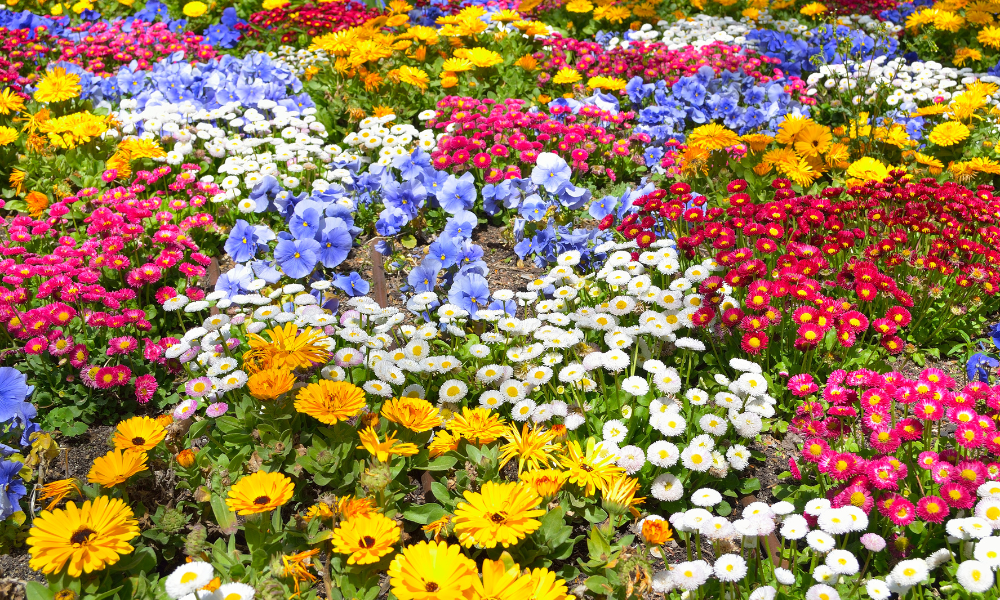
Many flowers can be grown in raised beds, adding beauty and functionality to your garden and attracting beneficial insects and pollinators. When planting flowers in raised beds, make sure to choose varieties that are well-suited to your climate and growing conditions.
Incorporating flowers into your raised garden bed can help create a more balanced and healthy environment for your plants. They can also enhance the overall beauty of your garden.
Popular choices of flowers to plant:
Marigolds are easy to grow, bloom profusely, and are great for deterring pests like nematodes and aphids. They come in various colors, from yellow to orange to red.
Zinnias are colorful and come in many varieties, from small and compact to tall and bushy. They're easy to grow and bloom all summer, making them a great addition to any raised bed.
Petunias are classic garden flower that is easy to grow and come in various colors. They bloom all summer long and attract pollinators like bees and butterflies.
Cosmos are a popular cut flower that can easily grow in raised bed gardens. They come in many colors, from purple and pink to white to orange, and bloom all summer.
Nasturtiums are colorful and edible flowers that are great for raised beds. They come in many different colors red, yellow, orange, and white have a peppery flavor that's great in salads.
Salvia is a hardy and drought-tolerant flower that's great for raised beds. They come in many colors, from purple and red to white, attracting pollinators like bees and hummingbirds.
Sunflowers are a fun and dramatic addition to a raised beds garden. Sunflowers are low-maintenance plants that can be easily grown. These plants don't require much attention and can be grown in almost any soil type. The sunflower plants are a great choice for raised garden beds because they attract pollinators, improve soil quality, and provide food for wildlife.
Raised beds provide a bounty of vegetables, fruits, herbs, flowers, and other plants with your TLC. The raised garden bed is a great investment for self-sufficiency and outdoor enjoyment, just like the regular garden.
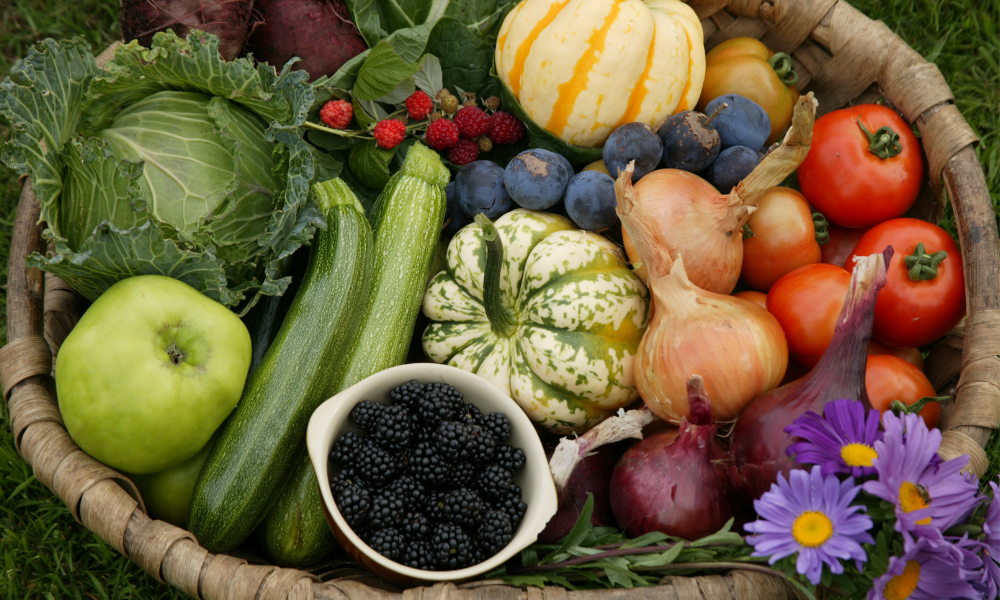
Conclusion
In conclusion, planting in a raised garden bed is a fantastic way to grow your own fruits, vegetables, herbs, and flowers, regardless of your gardening experience level. A raised garden bed is ideal for gardeners with limited space or poor soil.
With the tips and steps outlined in this guide, you can create a raised garden bed that is both functional and beautiful. With a little effort and dedication, you can reap the rewards of a bountiful and thriving garden that you can be proud of.
So, go ahead and start planning and planting in raised bed today, and enjoy the many benefits of growing your fresh produce right in your backyard.
Let me know what do you love to plant in the comment section.
Happy gardening!





Share and get 15% off!
Simply share this product on one of the following social networks and you will unlock 15% off!